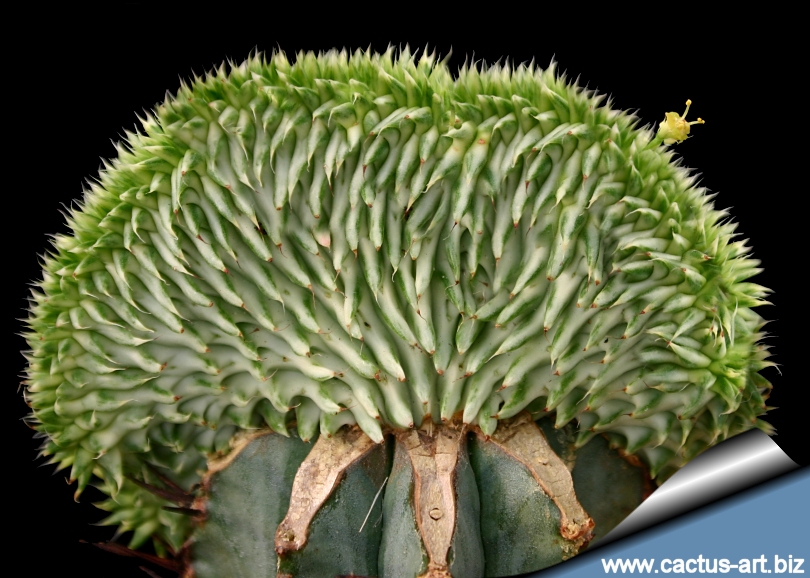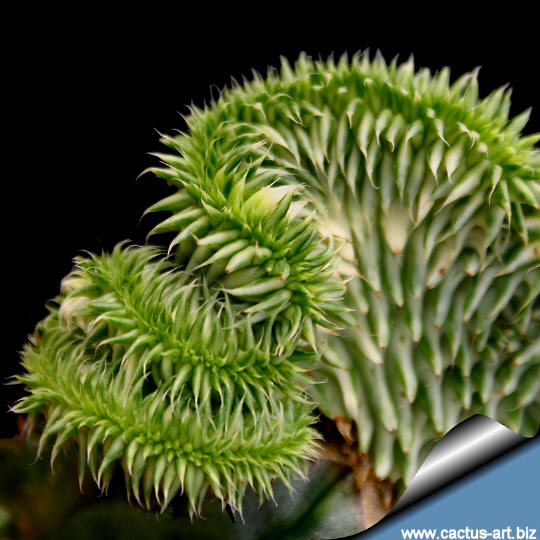|
|
|

Euphorbia susannae f. variegata cristata.
|
|
 |
Description:
Cultivation: The variegated crest of
E. susannae is difficult to grow on its own roots, and is
generally grafted for convenience on
E.
canariensis or
E. resinifera.
Frost Tolerance: Need frost protection.
Sun Exposure: Light shade.
Photo of
conspecific taxa, varieties, forms and cultivars of Euphorbia
susannae.
|
|


Advertising
|
|
|
|
|
Family:
Euphorbiaceae
Scientific name:
Euphorbia susannae
forma variegata cristata
Origin:
Garden origin (Nursery
produced cultivar)

|
|
|
|
|
|
Grafting: The plants
that are grafted on a more vigorous and easier stocks are easier to
keep, grow faster and produce more flowers and seeds. The method of
grafting euphorbias differs little from that of other succulents, except
in one important aspect. The latex must be washed or sprayed off until
hardly anything remains. After the latex flow has stopped, a further 1-2
mm slice can be taken from both surfaces without a new latex flow
starting. Both
scion and
stock need to be at the start of the growing season. The stock
should be cut as near as possible to the growing tip, as here the
vascular bundles are dense and not yet woody and will feed the scion in
the best possible way. Where possible stock and scion should be of
similar diameter. The cut surfaces are held together with elastic bands
in cross style, over the plant top and under the pot. The plants should
be left in an airy and shady place for 7-10 days before the bands are
removed.
Warning: As with all other Euphorbias when a plant get damaged it
exudes a thick white milky sap known as latex. This latex is
poisonous and particularly dangerous for the eyes, skin and
mucous membranes. So pay extreme attention not to get
any in your eyes or mouth. Cultivated plants must be handled
carefully.
|
|